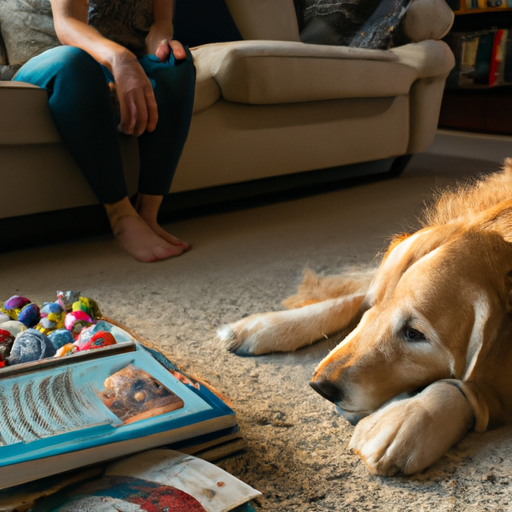Understanding Your Furry Friend’s Anxiety
You’ve noticed your dog behaving differently lately. They seem to fret when you’re not around, causing a disruption not only in their life but also in yours. The culprit? Separation anxiety. As a caregiver, it’s crucial to understand that separation anxiety in dogs manifests as a serious condition. It’s not simply a slight worry; it’s an intense fear of being left alone that can lead to destructive behavior.
Recognizing the Symptoms
Is your dog showing signs of separation anxiety? Here are some indicators you should look out for:
- Excessive barking or howling when left alone
- Destructive behavior such as chewing furniture or scratching at doors
- Accidents in the house despite being house trained
- Excessive pacing in a fixed pattern or circle
- Attempts to escape from where they are confined
Remember, these signs often occur within 30 minutes of your departure.
Effective Management Strategies
Relieving your pet’s separation anxiety isn’t a one-size-fits-all process. It requires patience, understanding, and oftentimes, a tailored approach. Here are some suggestions:
- Counter-conditioning: This strategy involves changing your dog’s reaction to being alone. For instance, you could give your dog a treat-filled puzzle toy every time you leave. They will begin to associate your departure with something positive.
- Desensitization: Gradually acclimate your dog to your departures by leaving for short periods of time and gradually increasing the duration.
- Professional Help: In severe cases, it might be beneficial to seek help from a professional dog trainer or a veterinary behaviorist.
Medication: A Last Resort
Sometimes, despite your best efforts, your dog’s separation anxiety persists. In such cases, medication might be an option. However, medication should be considered as a last resort and always under the supervision of a veterinarian.
| Medication | Purpose |
|---|---|
| Clomipramine | Used for the treatment of separation anxiety in dogs |
| Fluoxetine | Helps manage obsessive-compulsive behaviors |
| Diazepam | Used for its calming effects |
Remember, these medications are only part of the treatment plan and should be used in conjunction with behavioral therapy.
A Final Word
Dealing with a pet’s separation anxiety can be challenging. But remember, you’re not alone. Reach out to your local vet or pet community for support and guidance. Patience, persistence, and love are the keys to helping your furry friend.
FAQ
Q: Can separation anxiety in dogs be cured?
A: While it may not be completely cured, it can be effectively managed with proper strategies and treatment.
Q: How long does it take to treat separation anxiety in dogs?
A: It varies for each dog. Some may show improvement within a few weeks, while others might take several months.
Q: Can I use human anxiety medication for my dog?
A: No, always consult with a veterinarian before administering any medication.
Q: Are certain breeds more prone to separation anxiety?
A: Separation anxiety can affect any breed. However, it is more commonly seen in breeds that are more naturally anxious or energetic.



